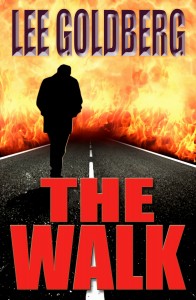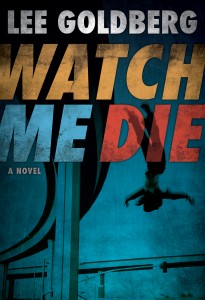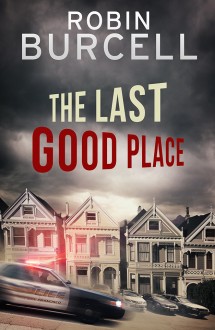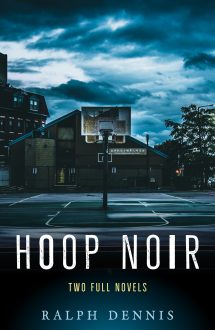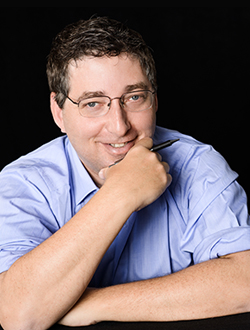
I grew up near San Francisco, a city with enormous charm and character, a definite center and, thanks to the Bay and the Pacific, obvious borders. San Francisco is a city with such a strong, undeniable personality, that it almost feels like a person to me instead of a place. I assumed, in my inexperience and youth, that all of the great cities of the world would be like that. And I eventually learned that, for the most part, I was right.
But not Los Angeles.
When I first arrived here in 1980 to go to UCLA, all I saw was endless sprawl, about as colorful and inviting as a parking lot. It was a city seemingly without shape, boundaries or a personality that I could identify. I was lost within it, unable to find its center or my own.
I eventually realized that I was looking at the city all wrong. It was a mistake to try to grasp the enormity of it, to see it all in my mind. There’s a reason that L.A. is where movies and TV shows are made. The city is a soundstage, a green screen, a back-lot. It’s city that’s remade every day, where history is measured in increments on a parking meter. I had to make the city my own, and I did that through my fiction and screenplays.
So perhaps the best way to understand how I see Los Angeles, and my relationship with it, is by looking at how I’ve written about it in my books over the years. Here are some examples:
“It was a clear, crisp day in the San Fernando Valley. A rainstorm had flushed all the gunk out of the air and onto the streets, where it washed into the drains and poured into the Santa Monica Bay, poisoning the water and prompting the closing of ten miles of prime beachfront. Days in L.A. didn’t come any nicer than this.” Dead Space
“The ground isn’t supposed to move. Everyone knew that. It was arrogance, and more than a little stupidity, to stay in a place where it did. But what was Hollywood without arrogance and stupidity? You couldn’t manufacture dreams if you weren’t willing to live in one yourself,” The Walk
“Beyond the TV and film locations, the most interesting and significant landmarks in the city were as transitory and disposable as the historical record they were printed on—-the slim ‘Maps to the Stars’ Homes’ distributed by bored Latinos sitting on folding beach chairs at street corners and freeway off-ramps,” The Walk
“[He] watched Spring Dano jog down the grassy median of San Vicente Boulevard, her breasts as solid and immovable as the Statue of Liberty’s. One a sunny day, tanned, perfect babes and tanned, perfect hunks jogged up and down the median, from Barrington to Ocean Avenue in Santa Monica, hoping to get noticed. […] The median was one of the great, unpublicized short-cuts into the entertainment industry. If you distracted an agent, producer, or director long enough to get him involved in a major traffic accident, you were on your way to a walk-on role in a series or a weekend read of your spec script.” Dead Space
“She crossed Santa Monica Boulevard and entered the fancy shopping district known in all the tourist guides as the Golden Triangle, which sounds like a sleazy euphemism for a woman’s crotch. Based on the name, you’d expect to find topless bars and nudie shoes instead of Ralph Lauren, Gucci, and Tiffany’s. Then again, the most famous street in the area is Rodeo Drive, but you won’t find anything that even remotely has to do with rodeos, cattle, or cowboys. So right away you know nothing in Beverly Hills is what it says it is or appears to be,” Watch Me Die
“Los Angeles wasn’t so much a city as it was the undefined space between many small towns that had grown too close together. Unless there was an obvious cultural landmark, like the Chinese Theatre or Rodeo Drive, it wasn’t always easy to know where you actually were,” The Walk
“Even without a sign, he would’ve known he was in Little Tokyo. On the south side of the street, a recreation of a wooden watchtower marked the entrance to a mini-mall designed to resemble an authentic Japanese village, at least as it would have been if built by a Winchell’s Donuts franchisee,” The Walk
“She wasn’t dressed for rain. Nobody in L.A. ever was. They couldn’t imagine a day without sunshine and felt naked without sunglasses,” Diagnosis Murder: The Past Tense
“The only natural source of water in the valley was the Los Angeles River, which remained bone dry half the year, only to swell in the winter as much as three-thousand fold in a single rainy day. As much as Los Angelenos craved water, they didn’t appreciate the unpredictability of the river and treated it as they would any other piece of land. They paved it,” The Walk
“After World War II, service men flush with GI Loans all wanted their square footage of the American dream and came looking or it in the San Fernando Valley. Developers manufactured the dream with assembly-line precision, economy, and sameness, coating the valley with ranch-style homes that offered easy-living in harmony with nature, what little of it hadn’t been graded and paved over,” The Walk
“The name of their [apartment] building was written diagonally across the front in plywood script and punctuated with a starburst lamp. The building was a rectangular stucco box disguised with enormous wooden fins that made the tenants feel as if they were living in the trunk of a 1959 Cadillac,” Diagnosis Murder: The Past Tense
“The Old Money felt that when the valley’s rich had real money and actually mattered, they’d move to one of the Bs – Brentwood, Beverly Hills, or Bel-Air. Until then, they deserved the valley,” The Walk
“The [Santa Monica] pier was a pleasant sight, if you were in the dark and looking at it from a distance,” Mr. Monk and the Two Assistants
“It’s a real nice drive through the Santa Monica Mountains, with lots of charred trees and blackened earth from the annual wildfires to look at. You also pass some dramatic gouges and gashes in the hillsides from the seasonal mudslides. It’s not the place I’d pick to build my secluded mansion, but I’m not a rich movie star or studio executive,” Watch Me Die
“He stayed several cars behind her as she cruised Pacific-bound on Jefferson, across the wide-open marshland, the most valuable, undeveloped property in Los Angeles. The land had been earmarked for decades as the site of an ambitious, upscale neighborhood of towering condos, exclusive beaches, swank shopping, and private marinas, but was mired in legal challenges, zoning ordinances, and politics. For now, the land was home to cancerous ducks, corpulent mosquitoes, and chunks of sewage that dropped from incoming jets like shit from a pterodactyl.” My Gun Has Bullets
Reading those excerpts now, it would be easy to think that I don’t like L.A. much. The truth is, I do like it. I like it the way you like a strange Uncle who is forever youthful, always clever and funny, but you know half of what he tells you is lies and that when he goes to your bathroom to take a piss, he’ll steal all the drugs in your medicine cabinet, including your kid’s Flintstone vitamins.
I also know that, where-ever I might live in the future, I’ll never stop writing about this place. After living and working here for nearly thirty years, L.A. has become a part of me. For better or worse.
Lee Goldberg is a two-time Edgar & Shamus Nominee, a Poirot Award Honoree, and the New York Times bestselling author of fifteen MONK mysteries, the DIAGNOSIS MURDER mysteries, and the action thrillers THE HEIST and THE CHASE. He’s also the co-founder, with Joel Goldman, of Brash Books.
